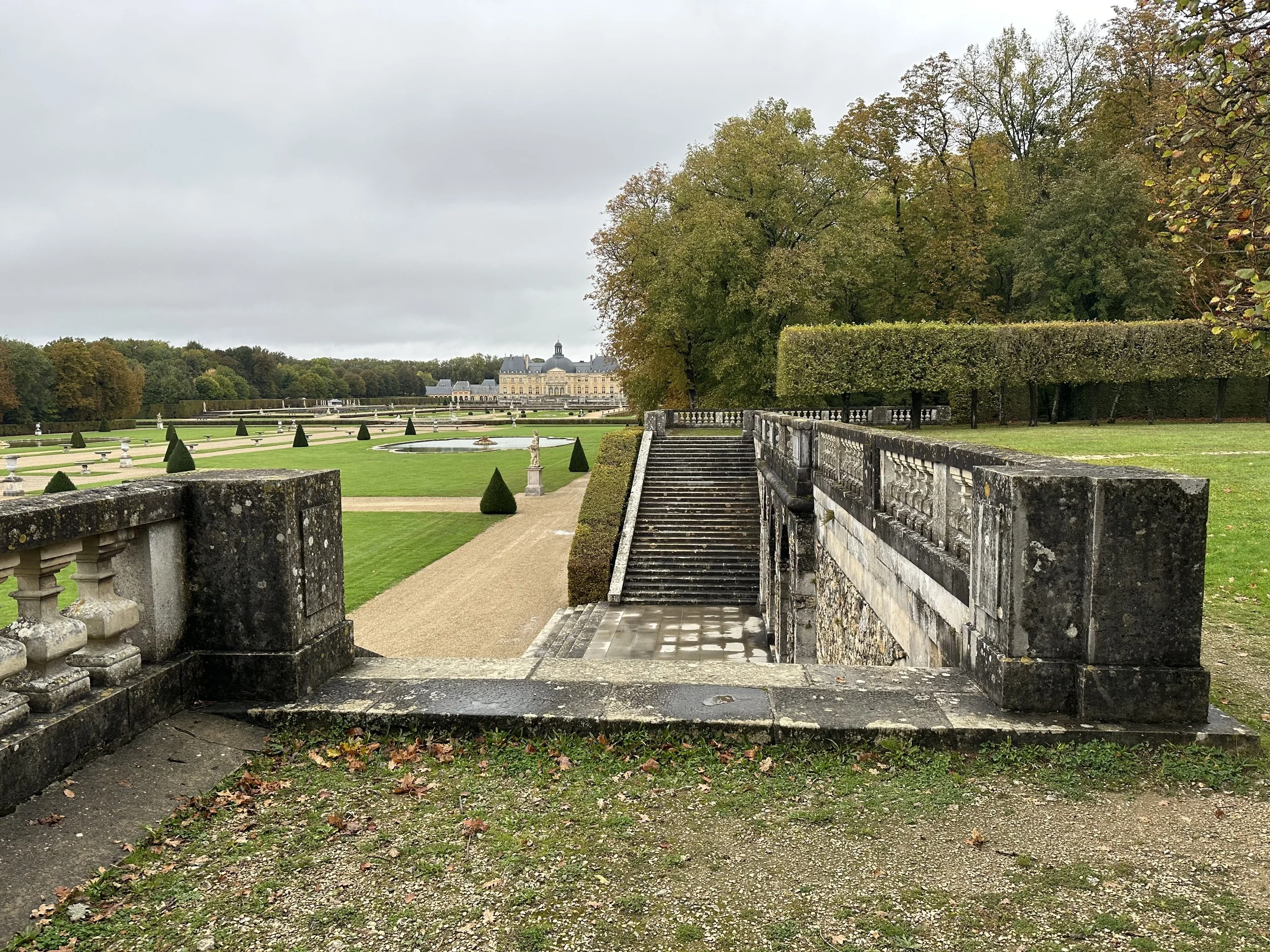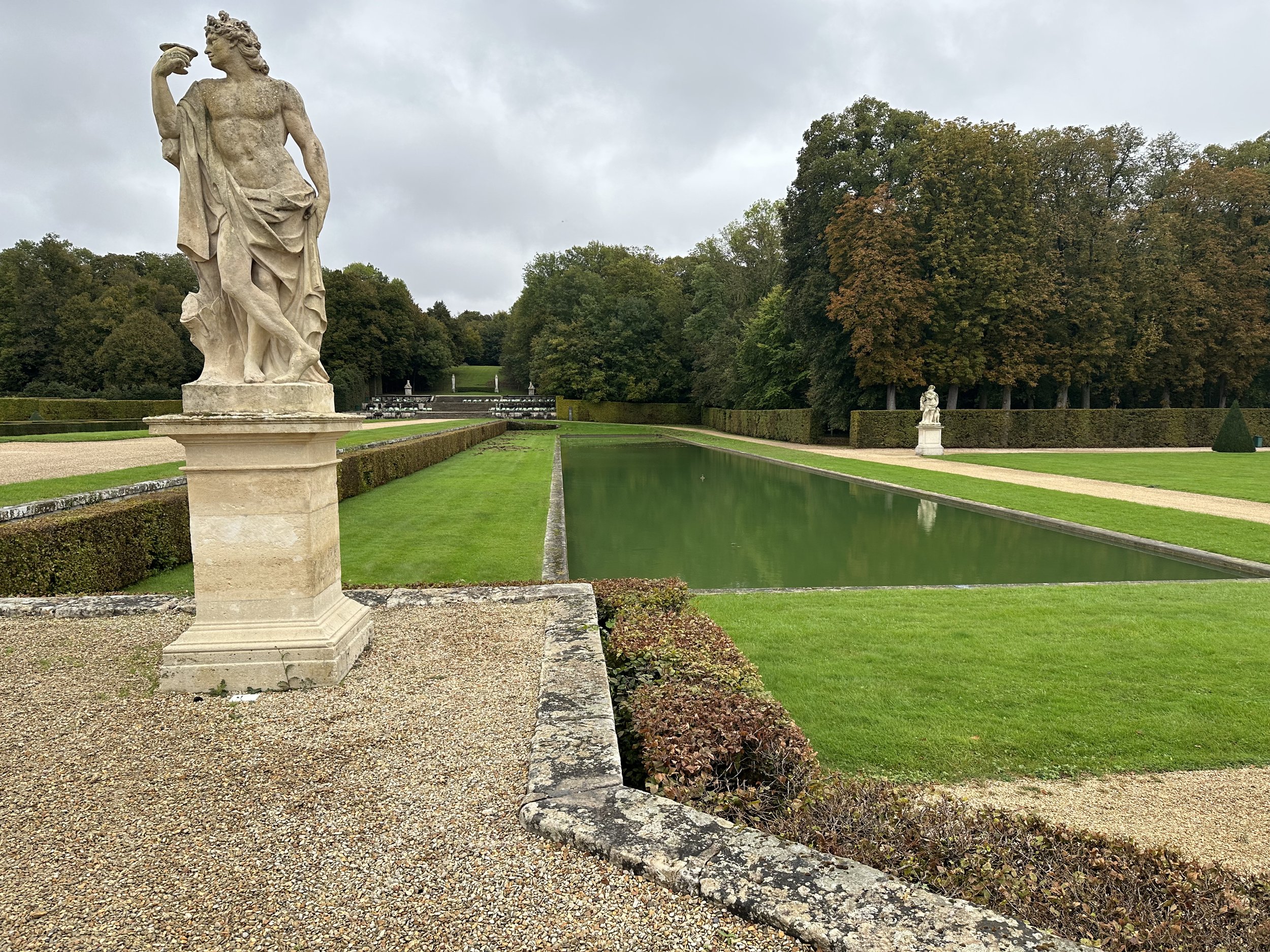Entertaining Magnificence - Vaux le Vicomte
Vaux le Vicomte - view from the terrace. Photo Credit: Garth Falconer.
It’s a multi-layered, wonder-filled story that has entranced me and brought me back after 34 years to a Chateau and grounds 55km southeast of Paris called Vaux le Vicomte.
This place is well known and often bracketed in the history books as the beginning of the French grand formal style of Louis XIV, lashed together with the supposed evils of “subjugating nature” and the social and environmental consequences of such lavish creations and their maintenance.
But there is more to this mid-17th century story that predated Versailles than the tragic indulgence of Nicholas Fouquet, the finance minister who dared to outdazzle the King of France with his stunning conception of house, garden, and festival and was summingly imprisoned for life.
In part, it’s a story about the power of collaboration between a visionary patron and 3 great artists, In this case, the architect Louis Le Vau, painter Charles Le Brun, and landscape architect Andre Le Notre. The story also delivers graphically a rare virtuoso performance from landscape design. For her,e boldly carved out of 33 hectares of forest, runs a narrow 3-kilometre-long clearing creating a stunning visual axis linking the horizons, supported by strongly outlined terraces, moated platforms, and a series of unfolding and surprising mini vistas and features. The chateau itself is simply placed in the middle of the theatrical goings on.
Photo Credit: Garth Facloner.
The story is also about the start of the audacious career of Le Notre, the son of a nurseryman, inspired by the Tivoli gardens, educated in astronomy and geometry, and who was well able to articulate the heady aspirations of his time even if it was for a very small elite.
Add to the story the application of innovative technology to give full heightened effects– such as the harnessing of a small stream into a 1km long canal and into 35 gravity-fed fountains.
But wait, there are more installments, as the story continues through the perseverance of the sugar baron Alfred Sommier who, in 1875, was determined to totally restore this cultural treasure whilst keeping it in the family. His descendants are still focused on the immense ongoing job supported by paying visitors, a gift shop, candle-lit evenings, and “If you have to ask how much it costs, you can’t afford it" private weddings.
Stroll around or even take one of the estate’s electric buggies, one can feel the lightness of being, like the other 330,000 visitors a year that subscribe to that need for a taste of utter magnificence, even if it’s just for a short time and from another age.
Photo Credit: Garth Falconer.
The article and photos are shared with permission from the author, Garth Falconer.


